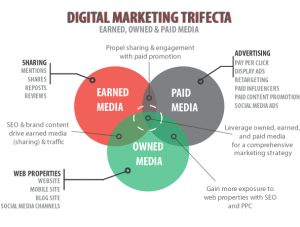As a call center agent, a day of work can be like whiplash. They have hours of monotonous work the first half of your shift and then… BAM! Something goes awry and they’re swamped with back to back phone calls from angry customers.
The switch from boredom and tedium to high intensity gets draining. On top of that, agents often feel responsible for salvaging struggling customer relationships. They’re constricted by KPIs that feel impossible to reach. And, they’re stuck using clunky technology but told to be efficient.
Call center agents are trained to remain patient, positive, happy, and helpful. But, it gets tough to maintain these traits when stress and burnout creep in.
It’s no surprise, then, that customer support agents are at high risk for burnout. According to one study, 74% of call center agents are at risk. And, 30% of those folks are at a severe risk for burnout. Those numbers are far too high. With burnout rates soaring, contact centers also have some of the highest turnover rates in the country, ranging from 30-45%.
These call center burnout stats don’t need to be your reality. You can create change in your center’s operations. But, you have to have the right processes and tools to help.
When Outdated Technology Drives Agents Away
I used to work in a call center that made us use six different systems and windows in each customer interaction. We were required to jump from screen to screen. One to document inquiries and customer contact information, several to gather customer information, and even more to report situations to our operations team.
It took weeks upon weeks of training to figure out what the process was for each window. Nothing flowed together when you needed it to. The customer was already annoyed from being on hold. So, frustration only grew as each rep had to hop between windows to answer a simple question.
The job of a call center agent is tough enough without dealing with slow, redundant software. Working with software and tools that are complicated and poorly integrated slows agent productivity in every interaction.
As agents fumble through software, their focus gets pulled away from your customer’s needs. They instead get sucked into processes, increasing agent stress and reducing service quality. Technology should help and support your operations, not drive agents further from success.
Start combatting call center burnout by simplifying your agent’s experience. Give them the tools they need to deliver a better customer experience.
Use digital transformation and omnichannel support to increase engagement across every touchpoint. Let’s look at a few technology trends to implement in your call center to fight burnout, attrition, and build agent and customer loyalty.
Fighting Call Center Burnout With These Three Tech Trends:
1. Increase Automation (Where Available) To Drive Away Monotony
According to Salesforce, about 23% of service organizations use automation and chatbots today and 53% expect to do so by 2020. This is a 136% growth rate — foreshadowing that intelligent automation will play a big role in the future.
With the COVID-19 pandemic changing the workplace, CCW Analyst Brian Cantor recently stated that implementing AI-driven infrastructures is a need for effective contingency plans. Automation helps contact centers seamlessly adapt to surges in volume when things go awry. It takes on the simpler tasks eating away at your time so you can properly manage losses in demand or changes in customer expectations.
Automating tedious processes doesn’t just act as more support during business crises. It has many benefits for your call center — particularly for your agents. Automation enhances agent efficiency. It helps you gather initial case information from the customer. Then, when you set the right rules, it can serve up relevant answers back to your customers — freeing your agents up to work on more strategic tasks and complex questions.
Customize your technology so automation occurs across every digital channel you support to handle basic record keeping. Use it to gather customer information so your agents don’t have to spend so much time on repetitive tasks.
What’s more? Intelligent automation can help you assimilate information over time, creating patterns that solve basic problems faster.
Let’s say a customer calls with a complaint about their account settings and wants to reset their password. What’s next?
You get this question a lot, so you already have a self-help article already written on the topic. Rather than send the customer straight to an agent, you set conversation triggers for words related to your most common questions, like “password.” Then, when your system picks up on those trigger words, it directs your customer to helpful articles with matching keywords (read: the article your team wrote on “how to reset my password”).
Now, agents aren’t stuck trying to pull customer information from several different windows for a simple question. Instead, information is ready and available to serve up to the customer and handle their situation efficiently. Automation rids your agents of the boring repetitive tasks and empowers them to focus attention on the customers who need human intervention.
Automation also benefits you, manager. Save yourself long hours of coding call routing algorithms. Use it to automate scheduling your agents, route coaching lessons to your team, and even alert you to KPI thresholds that need attention. Use your automation tools to gather agent information and data so you can provide better coaching.
2. Advance Your Self-Service Tools to Cut Out the Noise
Think about the number of repeat questions you receive from your customers. If you could cut out all the noise of basic questions and inquiries your customers send to your agents, imagine the time you’d have to do all sorts of things. One of the reasons your agents may be burnt out is due to the lack of time they have for personal and professional development in their work.
Employees need space to process the work they’re doing during the day. They need community to build ties and loyalty. They need opportunities to grow and learn.
If you could open up more time in the day for coaching, fellowship, and de-stressing, wouldn’t you? Self-service portals help your customers find answers to the fundamental questions fast and on their own terms. When a customer starts off in a self-service portal, you can implement processes to easily transfer them to an agent, too.
Research shows that 40% of consumers contact a call center after they’ve exhausted the available self-service options. And, 91% of consumers say they would use an online knowledge base if it was available and tied to their needs. These stats prove that self-service is important to your customers. But, it similarly benefits your call center agents.
Customers tend to view reaching out to a call center as a last resort these days. If they can find answers to quick questions through provided resources, they don’t need to bother calling. Self-service tools shorten call queues. Thus, saving time for agents so they can handle more complex issues. They then get space in the day for training and taking necessary breaks. More than just six minutes out of the queue.
When you have more time to invest in your agents’ success, your agents are more likely to remain engaged in their work and combat burnout.
3. Use Omnichannel Customer Service to Create a Simplified Journey
One of the primary ways to encourage simplicity through your call center technology is to implement omnichannel customer service. Omnichannel service takes all your customer communications, all of your channels, and unifies them in a seamless delivery.
With an effective omnichannel customer experience strategy, your agents have access to all the essential customer information they need to deliver a personalized experience to customers.
Omnichannel service is known to be customer-centric service. Today, nearly all consumers own more than one device. Customers don’t enjoy being confined to only one or two means of communicating with businesses.
They want the freedom to reach out to any brand anywhere — via social media, live chat, phone, texting, and more. Omnichannel gathers information from customers, no matter the channel. It then passes along that data every step of the way. Every agent has the context and customer data they need to resolve a customer problem. And customers don’t have to repeat themselves at every touchpoint.
Sounds great for the customers. But, how does this support your agent and prevent burnout? Omnichannel removes the awkwardness I described earlier. Remember? Six different windows just to gather the customer information needed to answer and document a single interaction!
If you channel your customer’s data accurately with your omnichannel strategy, your information flows to a single database for your agents to access. Your agents then get the full narrative of a customer’s relationship with your company, building the entire case of their inquiry.
This relieves your agents from having to hop from one channel to another to answer a problem. Ensure your omnichannel platform compiles your channels into a single queue, with your customer’s history on screen, so agents get the full picture of a customer’s journey.
And just like that, agents no longer sift through different windows and processes to deliver a personalized customer experience. And, your customers don’t have to repeat their information over and over again.
When you prioritize better technology in your call center, you can proactively relieve stress, fight agent burnout, and empower your agents to deliver better customer service.
Business & Finance Articles on Business 2 Community
(17)





